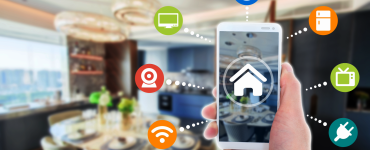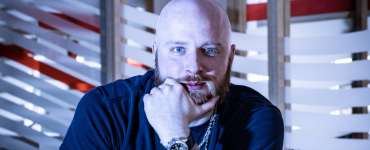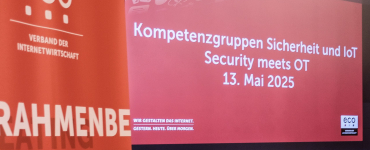Which transmission standards are best suited for which IoT use cases? How can connectivity change or revolutionise the Smart City or Smart Home? We will discuss this with experts at IoT Business Trends under the title: Gamechanger Connectivity on 14 June at Microsoft in Cologne. In the run-up to the event, we spoke to Bastian Faßnacht, Product Manager at NetCologne, about the many possible uses of the LoRaWAN transmission technology and the ThingsNet IoT platform. Attendees can learn even more about this topic during his keynote speech at the IoT Business Trends (a German-language event). Register now for free
With NetCologne, you unlocked the LoRaWAN (Long Range Wide Area Network) radio network technology and the ThingsNet IoT platform in May. In your opinion, what are the greatest benefits of the transmission standard for manufacturers, the user industry and users?
Bastian Faßnacht: LoRaWAN is extremely energy-efficient as a transmission technology. This means that battery-operated sensors can be used which do not require high maintenance due to their long service life. This allows ThingsNet to be used in conditions where there is no power and possibly no other connectivity available. The selected carrier frequency and the special type of signal design lead to optimal building penetration of the signals, which makes LoRaWAN suitable for use in basements, for example. Due to the globally widespread use of LoRaWAN, a large number of sensors are available on the market so that an individual solution can be found for every conceivable application.
For which use cases is LoRaWAN already in use, and what potential can be tapped in the future?
Faßnacht: While we were still setting up our Internet in Cologne, we began to develop pilot projects with partner companies. RheinEnergie, for example, is currently equipping 2000 electricity distribution boxes with sensors. Penetrating moisture, fires or open doors can thus be detected at an early stage, and direct countermeasures can be initiated. RheinEnergie thus not only saves money but it also ensures an even higher level of uninterruptible power supply for Cologne’s citizens and businesses. Cologne’s public transport authority (KVB) uses ThingsNet to monitor point heating systems and thus prevent points from freezing in winter, making it impossible to adjust them and causing trains to unintentionally deviate from their route. The KVB is accommodating the residents along the tracks with the use of rail lubrication systems. To prevent trams from squeaking in curves, the tracks must be lubricated regularly. In order to always have sufficient lubricant available, the KVB monitors the filling levels of lubricant containers with ThingsNet. AWB Abfallwirtschaftsbetriebe Cologne are also already on board; here, an underground waste container in a green area was equipped with a fill level sensor. Thanks to the regular fill level transmission, emptying can take place according to demand, thus avoiding unnecessary staff deployment and environmentally harmful empty runs.
The further potentials are almost unlimited: Temperatures, humidity, brightness, vibrations, frequencies, filling, counter or occupancy levels and much more can be recorded with the help of retrofitted sensor technology without having to intervene in the safety systems of the facilities. LoRaWAN also supports asset tracking, which makes it easy to find production equipment on construction sites or in widely ramified areas. The solutions are always individually designed, and we invite every interested party to work with us on creative solutions for more efficient processes.
What key takeaways can attendees expect from your talk at IoT Business Trends? And to whom would you particularly recommend participation?
Faßnacht: The special features of LoRaWAN as a transmission technology will be a central part of my keynote presentation. However, the audience should also take away that NetCologne is the only one-stop provider in Cologne: The collection, transmission, storage, processing and visualisation of the data is carried out exclusively by NetCologne. The data does not leave Cologne and the customer has exactly one contact person. The information in my talk is accessible in such a way that it is also understandable for people who have been less involved with IoT or do not have a technical background. By enriching it with exemplary use cases and their benefits, my presentation is aimed, in particular, at decision-makers.
Mr Faßnacht, thank you very much for the interview!




